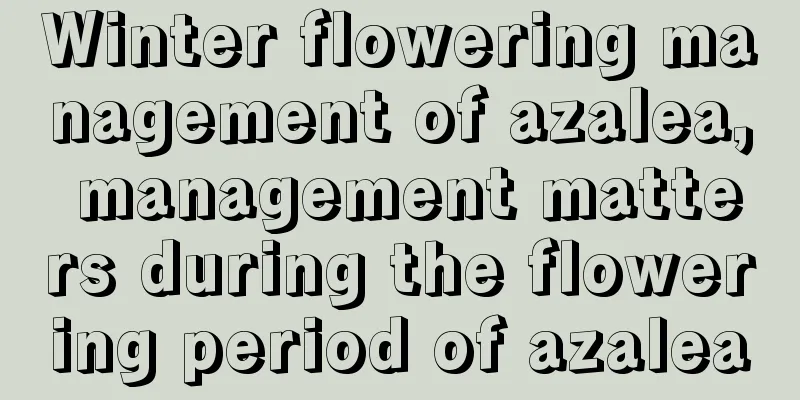When is the best time to plant plastic film peanuts?

|
Peanuts are China's main oil crops and cash crops . The planting area in China is very wide. Many areas use plastic film to cover the ground when growing peanuts. So when is the best time to plant plastic film peanuts? Let’s learn more about it below. When is the best time to plant plastic film peanuts? When the average ground temperature reaches 13℃, it is the time to sow spring peanuts covered with plastic film. The sowing time for plastic film peanuts in Henan, Hebei, Shandong and other places is from April 10th to 25th, around May 5th in the northernmost regions, and from late March to early April in the Huanghuai and middle and lower reaches of the Yangtze River. The temperature in southern regions such as Guangdong and Hainan is relatively high, so sowing is carried out in March. How to plant plastic film peanuts 1. Land preparation and ridge making Choose stubble land that has not been planted with peanuts for more than 3 years. The best soil texture is sandy loam that retains water and fertilizer and has medium fertility. For film-covered peanuts, the taproot is deep in the soil and the lateral roots are widely distributed. However, mulched cultivation usually does not involve intertillage and weeding, so land preparation is more stringent than open-field cultivation. Ploughing is carried out in late autumn and early winter, with a ploughing depth of about 25 cm. Peanuts are covered with film and mostly cultivated in small commercial plots. Prepare the land and make ridges with a height of 8 to 10 cm, a width of 65 cm, and a distance of 100 cm between ridges. Flatten the bed surface to make the soil even. 2. Apply sufficient base fertilizer It is best to apply base fertilizer in combination with tillage, with 4,000 to 5,000 kg of high-quality soil and fertilizer, 30 to 40 kg of phosphate fertilizer, 15 to 20 kg of ammonium bicarbonate or 5 to 7 kg of urea (or 12.5 kg of compound fertilizer ), 6 to 7.5 kg of potassium chloride or 40 to 50 kg of wood ash applied per mu. 3. Planting seeds Select first-class seeds with uniform kernels, large and full grains, no diseases or insects, no mildew, strong germination potential and high germination rate for planting. Soak the selected seeds in 30°C warm water for 3 to 4 hours to allow the seeds to absorb enough water. Place them on a brick bed, stuff them with wet wheat straw, cover them with burlap or straw, and then cover them with 6 to 9 cm of soil. After a day and a night or a day and a half, you can pick the sprouts and sow them. Cover cultivation generally adopts double-row planting, with two rows sown in each bed, the large row spacing is 55~-60 cm, the small row spacing is 40 cm, the hole spacing is 16~18 cm, and 2 seeds are sown in each hole. 4. Lamination There are two methods for peanut film cultivation: covering the film first and then sowing or sowing first and then covering the film. Regardless of which method is used, the film must be pulled tight and close to the ground, and sealed tightly on all sides and stepped on firmly to prevent the wind from blowing off the film. Before covering the film, spray the herbicide evenly on the bed surface. In addition, cover the seeds before sowing, and make sure to seal the sowing holes tightly with soil after sowing. 5. Field management Plastic film peanuts usually germinate in 8 to 10 days. After germination, they must be checked and replanted in time to prevent missing seedlings and broken ridges. In August and September, spraying 0.2~0.3% potassium dihydrogen phosphate or 2% superphosphate solution on the leaves can prevent premature aging due to lack of fertilizer in the middle and late stages. After peanuts are covered with film, because the plants are large and the seedlings are vigorous in the early stage, flower ulcer and flower rust are serious damages, so special attention should be paid to prevention and control. That’s it |
<<: How to grow gardenia indoors in winter
>>: How to care for Amaryllis in winter
Recommend
How to cultivate money string
Money tree growing conditions The soil for the gr...
Desert Rose Pruning and Shaping Methods
1. Pruning time The best time to shape the desert...
Cultivation methods and precautions of Pyracantha bonsai
In autumn and winter, the most attractive bonsai ...
How to Grow Turf
1. Level the land Planting turf has high requirem...
Do potatoes prefer shade or sun?
Do potatoes prefer shade or sun? Potato is a sun-...
The difference between Huayueye and Thickleaf Huayueye
The difference between Huayueye and Thickleaf Hua...
What flowers are suitable for growing in Panzhihua, and what are the city flowers and trees?
1. Climate characteristics of Panzhihua Panzhihua...
How to change the soil of a large potted lucky tree
Time to change the soil of the big pot lucky tree...
How to plant sea red beans
Temperature management of sea red beans Sea red b...
Cultivation methods and precautions of red tassel flower
Cultivation method of red tassel flower soil To c...
How long does asparagus grow?
How long does asparagus grow? The growth cycle of...
Introduction to lotus, when does lotus bloom?
1. Introduction to Lotus Lotus is one of the top ...
How to water the tiger tail orchid
Watering tips for Tiger tail orchid Sansevieria, ...
How to Eat Okra
1. Stir-fried meat 1. Wash the okra with clean wa...
How to ensure the survival of transplanted osmanthus trees
1. Choose the right time When transplanting osman...









